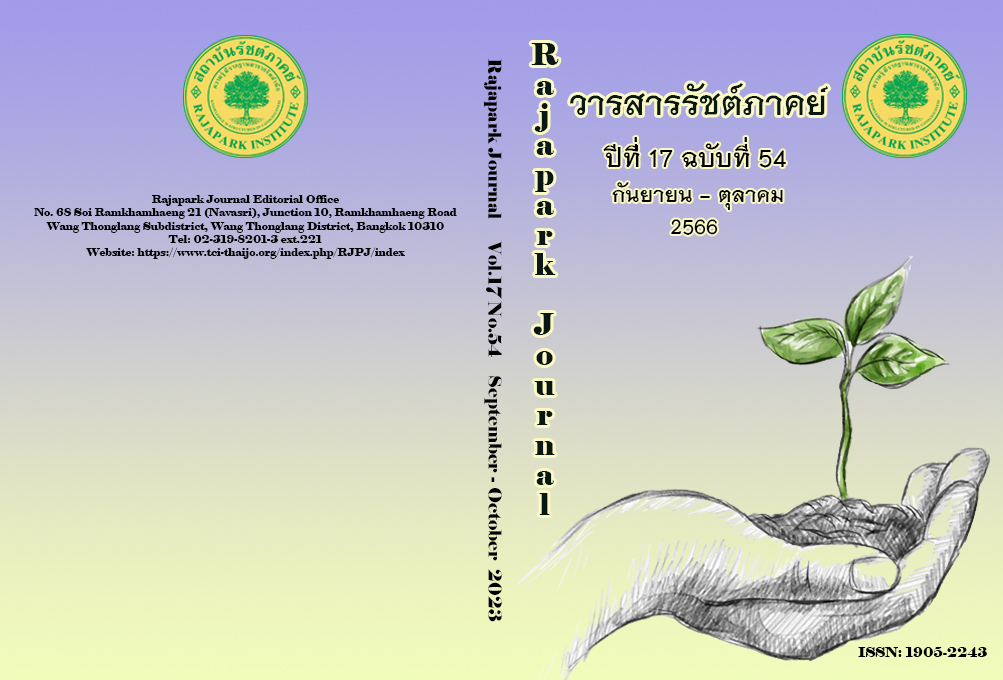The Development of Proactive Public Relations Strategy of Public Relations Department
Main Article Content
Abstract
The objectives of this research were to 1) study the problem situation and analyze the strengths, weaknesses, opportunities, and threats (SWOT analysis) of the Public Relations Department's proactive strategies; and 2) develop effective proactive public relations strategies that are proposed as a guideline for carrying out public relations missions that are clear, accurate, and prompt, as well as to create a positive organizational image. This research was qualitative, using in-depth interviews and focus groups. Key informants identified through in-depth interviews were 10 participants who worked in the public relations sector and had at least 4 years of work experience at the Department of Public Relations. A focus group discussion was brought together with a group of experts who worked in the public relations sector and have at least 4 years of work experience at the Department of Public Relations, totaling 15 participants. A content analysis was conducted. The results of the study revealed that 1) the problems of the proactive public relations strategy are: 1) creating awareness and perceptions among the target population; 2) budget constraints; 3) most outsiders views of the organization as the government's mouthpiece; 4) the organizational structure is no longer adequate to meet the needs of the current situation; and 5) delayed communication. 2) The development of a proactive public relations strategy involves supporting budgets for the use of technology in operations, encouraging staff to attend a training program, promoting the establishment of the information management committee for public relations, encouraging networking across all sectors, disseminating government information to the target population through various channels, and developing the Public Relations Department to be the center of historical archives by using the Big Data platform.
Article Details

This work is licensed under a Creative Commons Attribution-NonCommercial-NoDerivatives 4.0 International License.
Views and opinions appearing in the Journal it is the responsibility of the author of the article, and does not constitute the view and responsibility of the editorial team.
References
Breakenridge, D. (2008). PR 2.0: New Media, New Tools, New Audiences. Pearson.
Falkheimer, J., & Heide, M. (2014). Risk Management in Public Sector Organizations. Nordicom Review, 35(2), 123-138.
Humphrey, A. (2005). SWOT Analysis for Management Consulting. SRI Alumni Newsletter, 1(2), 7-8.
Julthab, S., & Tansuwannon, C. (2015). Proactive Public Relations Strategy of Higher Education Institutions in Southern Region. Suratthani Rajabhat Journal, 2(2), 175-194. https://so05.tci-thaijo.org/index.php/srj/article/view/123549
Kaewkamnurd, S. (2017). Development of Public Relations Processes for Strengthening National Security. https://prd.go.th/th/content/category/detail/id/87/iid/515.
Kanjanawasit, P. (2017). How to Develop Army Public Relations in the 4.0 Era. http://www.dsdw2016.dsdw.go.th/doc_pr/ndc_2560-2561/PDF/m8455/%E0%B8%A3%E0%B8%A7%E0%B8%A1.pdf.
Kasemsuk, C. (2018). Document for Self-learning on Principles and Strategies in Public Relations. Sukhothai Thammathirat Open University.
Mansiri, P. (2016). Handouts Public Relations Integration Strategy 4.0. https://image.makewebeasy.net/makeweb/0/nhdwvndC0/Document.
National Public Relations Board Office of the Prime Minister. (2016). National Public Relations Policy and Plan, No. 5. National Public Relations Committee Office of the Prime Minister.
Public Relations Department. (2021a). Public Relations Department (PRD). https://www.prd.go.th/th/content/page/index/id/1.
Public Relations Department. (2021b). Staff Division Information. https://personal.prd.go.th/th/content/category/articles/id/1202/cid/1214.
Ronald, S. (2004). Strategic Planning for Public Relations (2nd ed). Routledge.
Rasmussen, J. & Ihlen, Ø. (2017). Risk, Crisis, and Social Media. A Systematic Review of Seven Years’ Research in Nordicom Review, 38(2), 1-17. DOI: https://doi.org/10.1515/nor-2017-0393
Saisira, C. (2018). An Analytical Study of Approaches and Methods for Improving Work Processes “Approval for Special Lecture Activities” of the Faculty of Applied Statistics. National Institute of Development Administration.
Scott, D. M. (2007). The new rules of marketing and PR. John Wiley & Sons.
Shamsan, R.M., & Otieno, M. (2015). Effects of Strategic Public Relations on Organization Performance: A Case Study of Kenya Red Cross Society. International Journal of Scientific and Research Publications, 5(9), 1-12.


